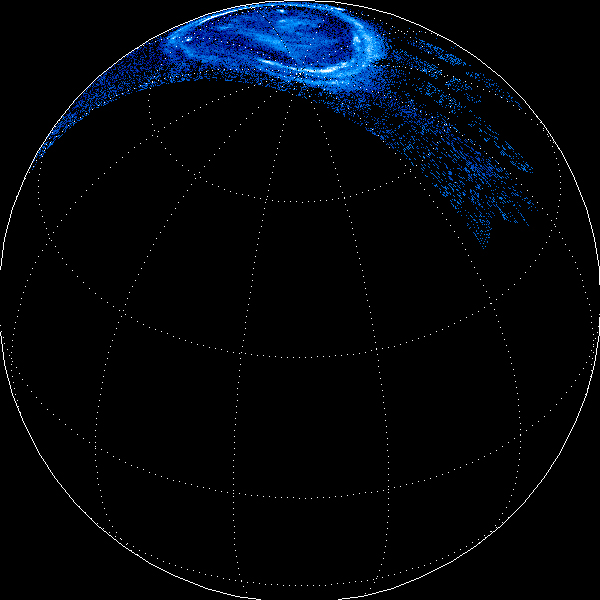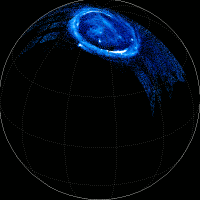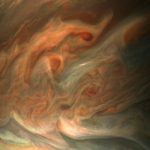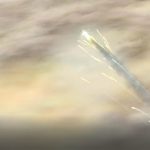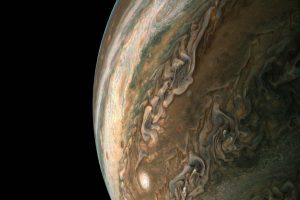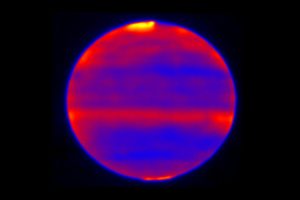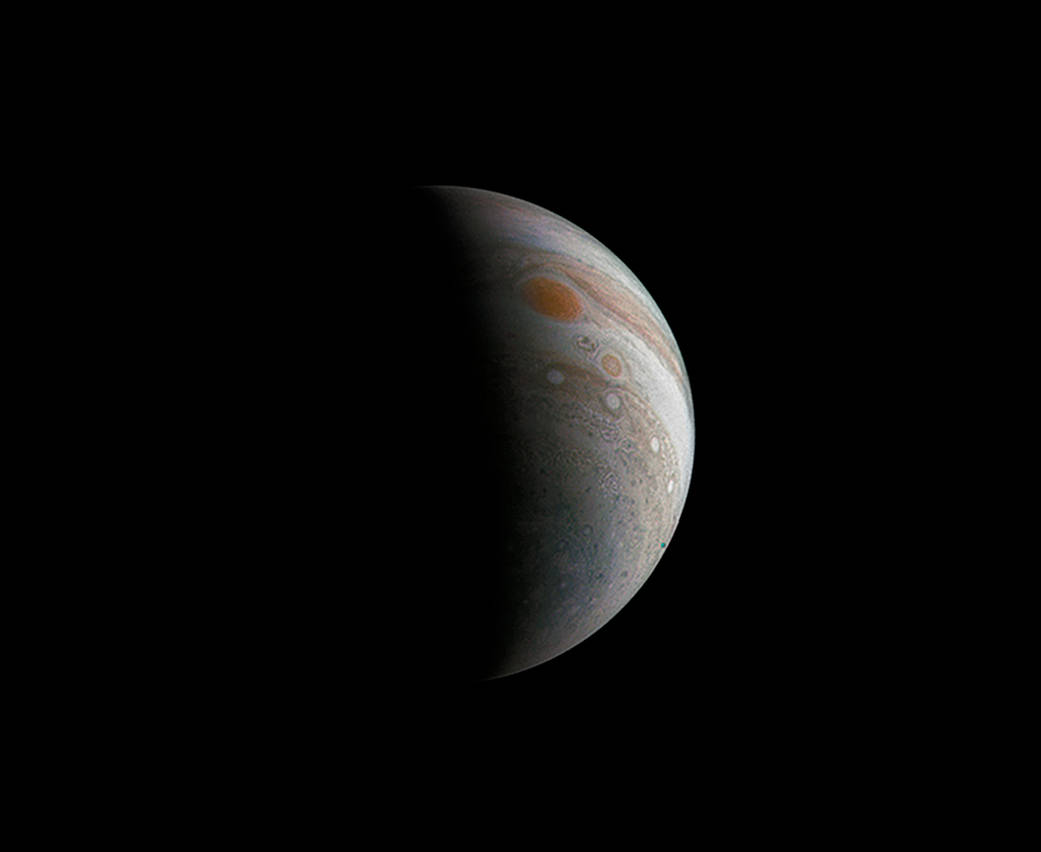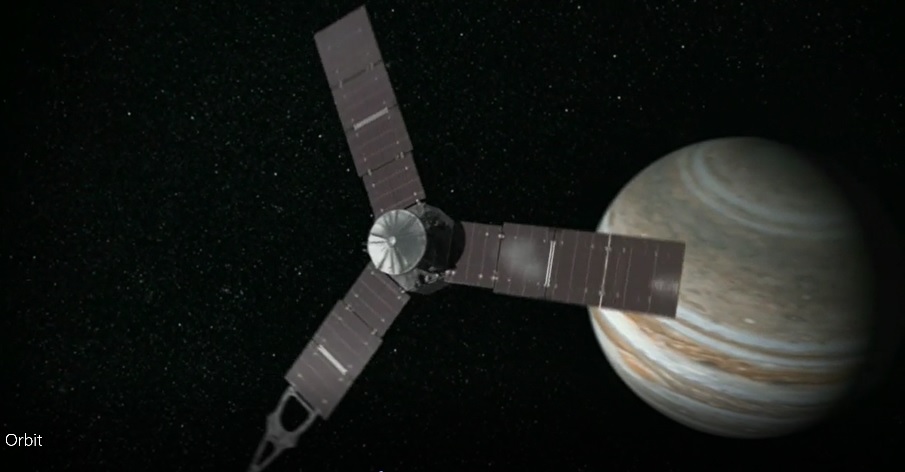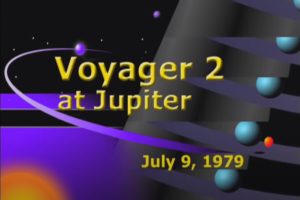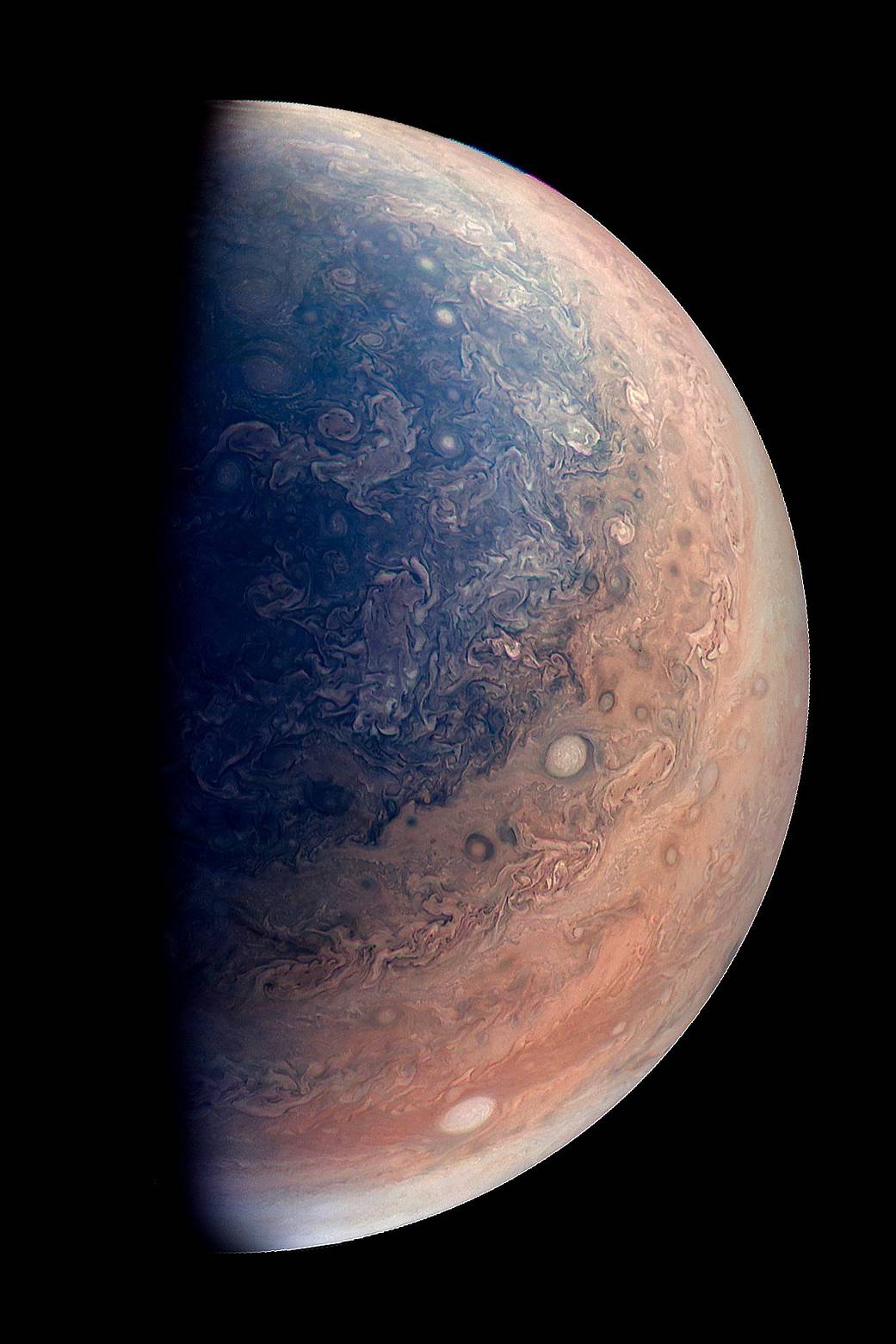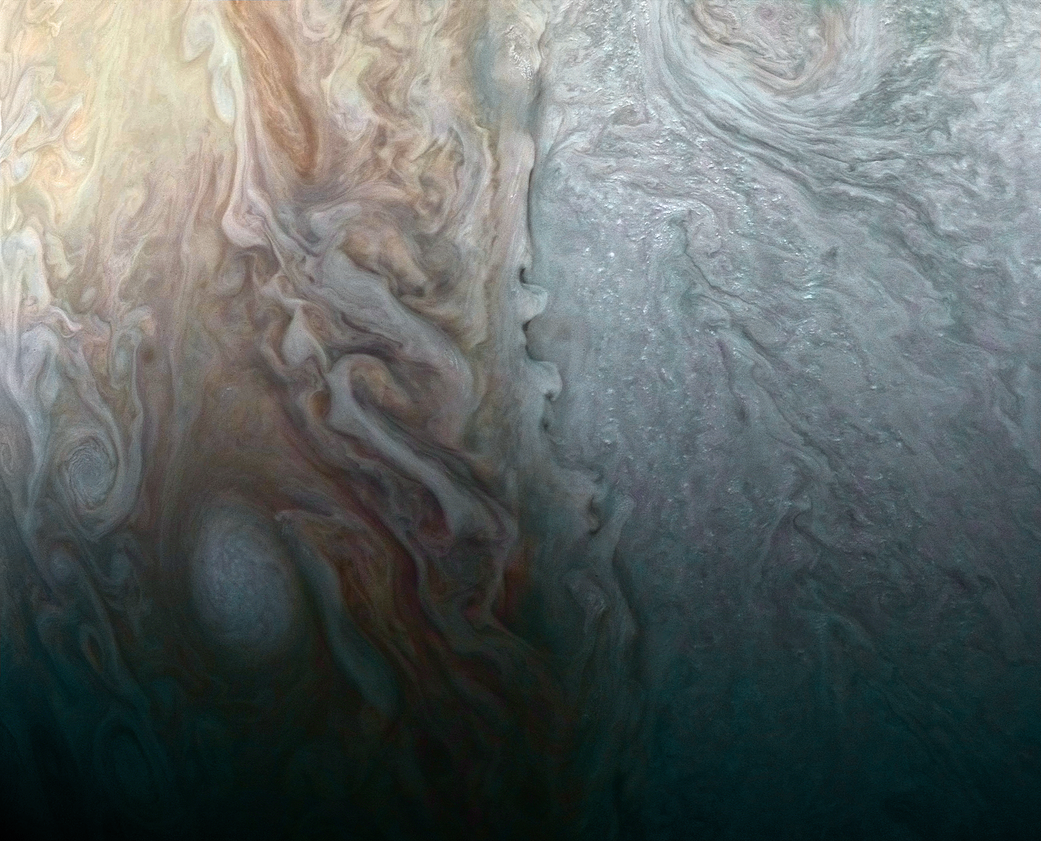木星の北極地帯の神秘的なオーロラをアニメーションにして公開されました。
This is a reconstructed view of Jupiter’s northern lights through the filters of the Juno Ultraviolet Imaging Spectrograph instrument on Dec. 11, 2016, as the Juno spacecraft approached Jupiter, passed over its poles, and plunged towards the equator.
これはジュノー探査機搭載の紫外線スペクトラムフィルターを使って2016年12月11日に撮影した木星北半球の光のデータを画像処理したもので、ジュノー探査機が木星の極の上から接近して赤道を横切って通過した際のものです。
大きなサイズはこちら(再生環境・ネット接続環境によっては読み込みに時間がかかります)
NASAは木星に現れるオーロラは、壮大なスケールと地球のオーロラの10〜30倍のエネルギーを放出する巨大なものだと伝えています。
NASAのオリジナル記事と和訳は以下となります。(記事の和訳は後程掲載します)
Jupiter’s Auroras Presents a Powerful Mystery
Jupiter’s Auroras Presents a Powerful Mystery
Scientists on NASA’s Juno mission have observed massive amounts of energy swirling over Jupiter’s polar regions that contribute to the giant planet’s powerful auroras – only not in ways the researchers expected.
NASAのジュノー担当の科学者たちは、巨大惑星である木星のオーロラに関係する極地帯を覆うように旋回している膨大な量のエネルギーを観測しています。これほどのエネルギーを科学者たちは想定もしていませんでした。
Examining data collected by the ultraviolet spectrograph and energetic-particle detector instruments aboard the Jupiter-orbiting Juno spacecraft, a team led by Barry Mauk of the Johns Hopkins University Applied Physics Laboratory, Laurel, Maryland, observed signatures of powerful electric potentials, aligned with Jupiter’s magnetic field, that accelerate electrons toward the Jovian atmosphere at energies up to 400,000 electron volts. This is 10 to 30 times higher than the largest auroral potentials observed at Earth, where only several thousands of volts are typically needed to generate the most intense auroras — known as discrete auroras — the dazzling, twisting, snake-like northern and southern lights seen in places like Alaska and Canada, northern Europe, and many other northern and southern polar regions.
Jupiter has the most powerful auroras in the solar system, so the team was not surprised that electric potentials play a role in their generation. What’s puzzling the researchers, Mauk said, is that despite the magnitudes of these potentials at Jupiter, they are observed only sometimes and are not the source of the most intense auroras, as they are at Earth.
“At Jupiter, the brightest auroras are caused by some kind of turbulent acceleration process that we do not understand very well,” said Mauk, who leads the investigation team for the APL-built Jupiter Energetic Particle Detector Instrument (JEDI). “There are hints in our latest data indicating that as the power density of the auroral generation becomes stronger and stronger, the process becomes unstable and a new acceleration process takes over. But we’ll have to keep looking at the data.”
Scientists consider Jupiter to be a physics lab of sorts for worlds beyond our solar system, saying the ability of Jupiter to accelerate charged particles to immense energies has implications for how more distant astrophysical systems accelerate particles. But what they learn about the forces driving Jupiter’s auroras and shaping its space weather environment also has practical implications in our own planetary backyard.
“The highest energies that we are observing within Jupiter’s auroral regions are formidable. These energetic particles that create the auroras are part of the story in understanding Jupiter’s radiation belts, which pose such a challenge to Juno and to upcoming spacecraft missions to Jupiter under development,” said Mauk. “Engineering around the debilitating effects of radiation has always been a challenge to spacecraft engineers for missions at Earth and elsewhere in the solar system. What we learn here, and from spacecraft like NASA’s Van Allen Probes and Magnetospheric Multiscale mission (MMS) that are exploring Earth’s magnetosphere, will teach us a lot about space weather and protecting spacecraft and astronauts in harsh space environments. Comparing the processes at Jupiter and Earth is incredibly valuable in testing our ideas of how planetary physics works.”
Mauk and colleagues present their findings in the Sept. 7 issue of the journal Nature.
Last Updated: Sept. 7, 2017
Editor: Tony Greicius
